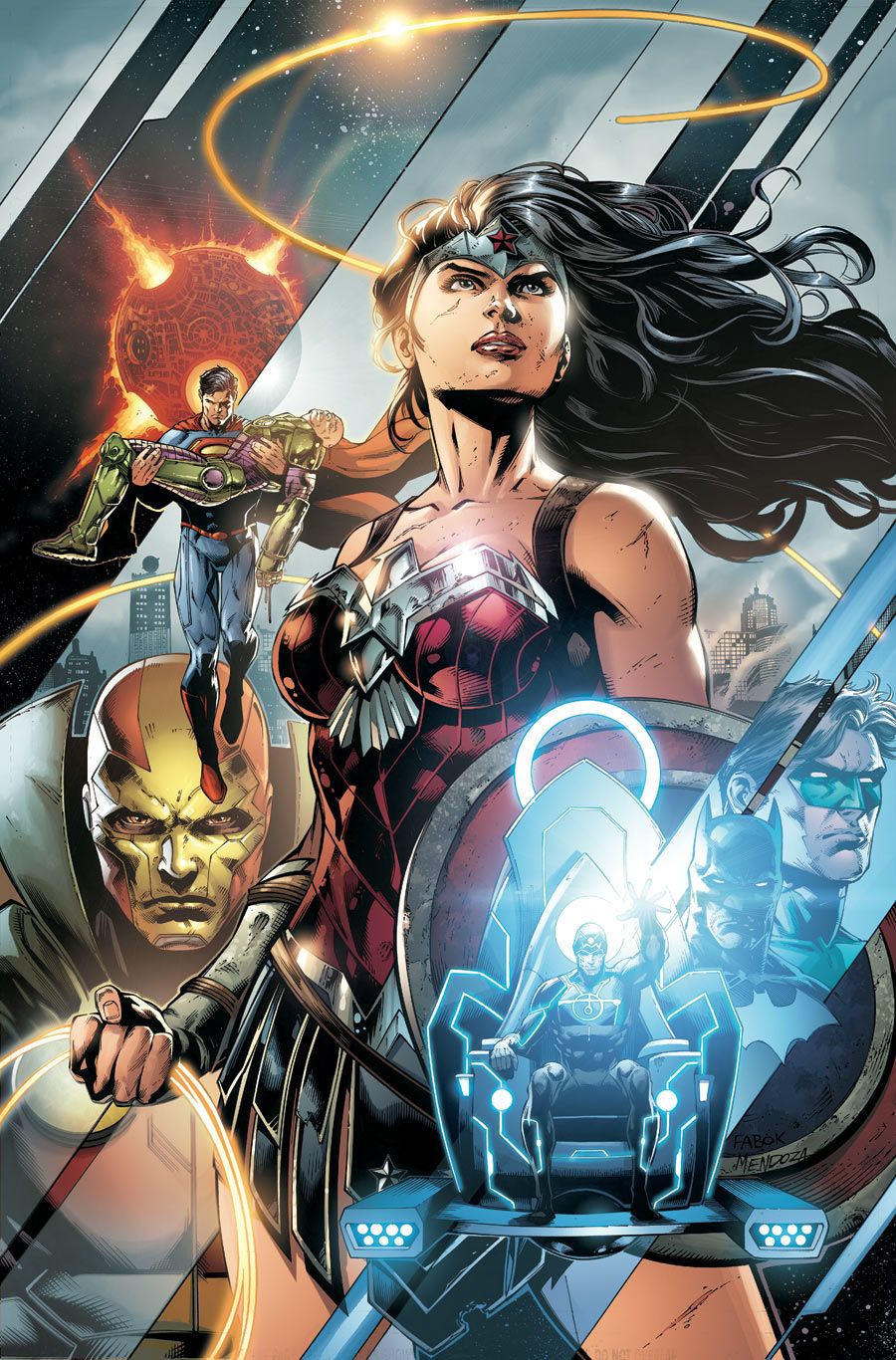One of the things becomes very clear in "Justice League" #42 is that, in the "Darkseid War," the enemy of your enemy is not really your friend at all. That's the danger at the core of Geoff Johns and Jason Fabok's story and, in establishing that fact early on, the duo quickly raise the stakes for not just the Justice League, but all of Earth.
It would have been easy for Johns to establish either Grail or Myrina Black as a strong ally, one whose true nature wasn't revealed until almost the end of the storyline. Instead, Johns shows us the sheer amount of danger that the duo have placed Earth in by bringing the Anti-Monitor there at this early stage. Even as Black claims that she's defending the universe by going against Darkseid, Johns is quick to have characters note what a truly awful (and destructive) plan this is. In essence, the war isn't Earth against Darkseid; it's Darkseid versus Black and Grail, with Earth trapped in the middle as a battleground. That makes a much more interesting premise, because there isn't anything akin to a simple victory condition to be met. Here, it's just plain survival.
Along those lines, Johns is quick to show how the Justice League is matched against foes just as powerful, if not even more so. There's a lot of retreating in "Justice League" #42, and so far the only real weapon they've found to use against the two sides is knowledge. That's another thing that works well. In theory, it's a smart choice because it shifts the book from "who can punch whom the hardest" to something that requires wit and intelligence. In reality, it's even better because the member of the League who gets this tool promises to provide a lot of fun story possibilities. It's a clever matching of character to weapon, and the possibilities are endless.
Fabok's art is just as good as ever. I love all of the little moments, like Mister Miracle rearing back as Black's gryphon checks him out; with his slight shift back and Rob Leigh shrinking the font just a bit, it's a great reaction. The big artistic moments are strong too, like the glimpse into Black's lair taking up two-thirds of a two-page spread. As much attention is brought to the weapons and trophies as it is the patterned tile floor, or Brad Anderson's soft red/orange glow that suffuses the room. Best of all, our brief glimpses of Apokolips are once more an industrial hell on earth. The massive furnaces mingled in with the buildings are a classic look, and Fabok and Anderson execute it perfectly in this day and age where nature is slowly getting squeezed out. This isn't just a monstrous place; it's a visual threat of our own future.
"Justice League" #42 doesn't have a huge amount of plot but it always feels busy and exciting. Johns and Fabok dish up some exposition along with a bit of forward traction, and the end result is a second chapter that keeps readers interested enough to want to come back for part three. "Justice League" is definitely determined to be the centerpiece of the DC Comics line and, right now, it definitely feels like it's providing a story that will eventually shape the future of a lot of characters. That's a good thing.

